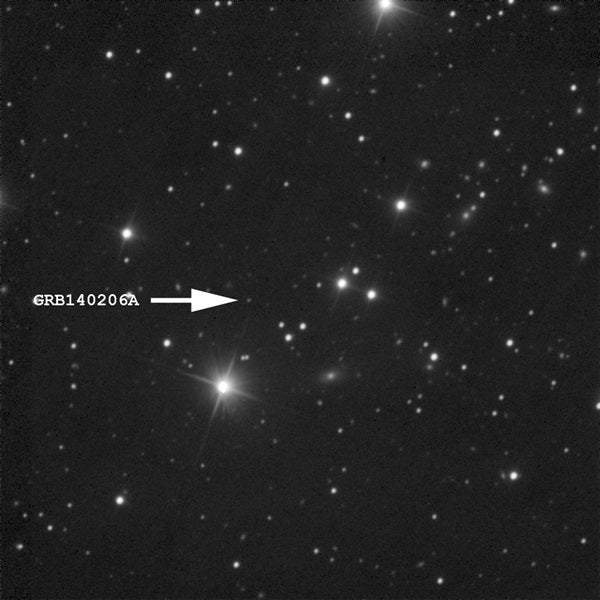The astronomers obtained the data February 6, 2014, at 8h33m09s UT using a 16-inch robotic telescope located at the Rancho Hidalgo Astronomy and Equestrian Village near Animas, New Mexico. They acquired 2-minute images through a red filter.
NASA’s Swift satellite initially reported the 60-second burst, dubbed GRB 140206A, only 44 minutes before the SON telescope imaged the afterglow.
The 2000.0 coordinates of the event are right ascension 9h41m20s and declination 66°45’38”. Those numbers place it in the constellation Ursa Major the Great Bear approximately 2.7° south-southwest of Bode’s Galaxy (M81), a favorite deep-sky target of amateur astronomers.
“Several professional telescopes have imaged the afterglow,” said Petri Kehusmaa. “But we got it first.”
The afterglow shines meagerly at magnitude 18 (measured through a red filter), and it seems to be fading. Other astronomers pegged its visual brightness around magnitude 16. The gamma-ray burst occurred some 11 billion light-years away. Observations and analysis are ongoing.










